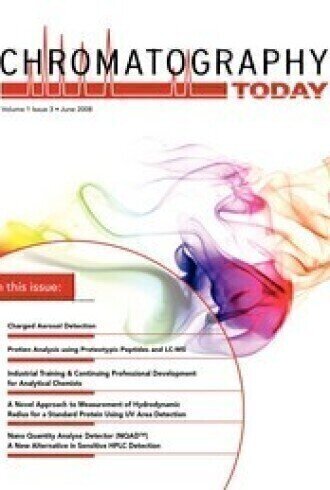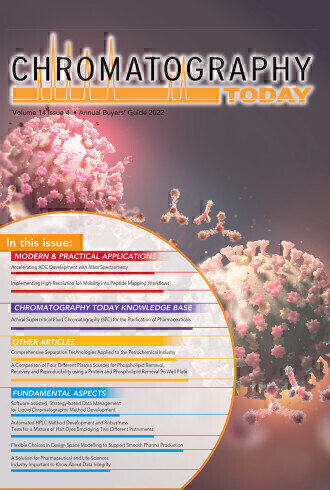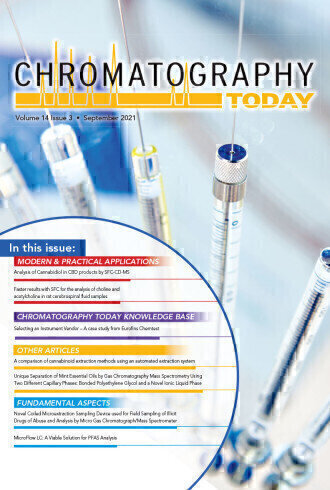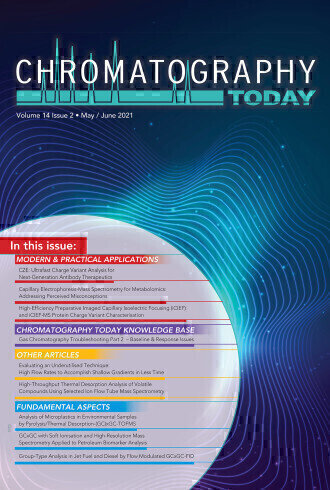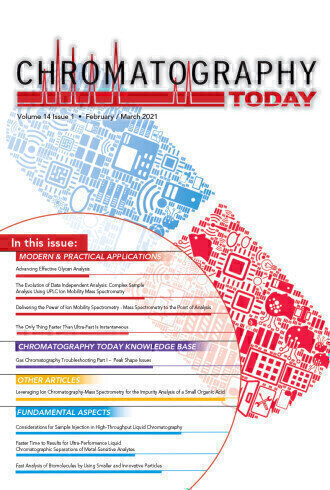Volume 1 Issue 3
Welcome to the third edition of Chromatography Today. The first edition seems as though it was just a minute ago but, reviewing the comment, it looks as though matters have already progressed with respect to the volume of good quality technical copy. Keep it coming!
In this edition of Chromatography Today, the focus is largely on detection strategies for liquid chromatography separations. It is probably fair comment to note that while there have been a number of recent and significant advances in separation technology (most notably the advent of UHPLC, sub 2- micron particles and fused core technology etc. as discussed in previous editions of this publication), there have been no major advances in detection technologies. Speaking with colleagues from the pharmaceutical industry, analyte detection is one of the greatest challenges they face and it is pertinent to dedicate an issue to this area. The detection panacea for all analytical chemists is the ‘universal detector’ i.e. a detector which will respond in a uniform manner to all analytes in a mixture. Ultraviolet/Visible (UV/vis) is the most common and popular detection mode for LC separations.
This is because of the reasonable sensitivity, selectivity and compatibility of this detector with gradient elution. However, the primary requirement for this detection type is the inclusion of an active chromophore and this is not always present in many classes of molecules e.g. native amino acids. This can severely limit the sensitivity of these types of detectors. There are many other detectors commonly employed for liquid chromatography and all have their positive and negative aspects to their performance. Alternative detectors include fluorescence, refractive index (RI), electrochemical, evaporative light scattering (ELSD) and nitrogen detectors amongst others. In this issue the use of the recently introduced corona charged aerosol detector (CAD) and the well-established mass spectrometer (MS) as quantitative detectors are highlighted. Additionally there will be technical articles reflecting emerging parallel array detectors and the new nano quantity analyte detector (NQAD) from Quant Technologies.
Hopefully readers will find these informative and reflect possible avenues in increasing the likelihood of success in their chromatographic endeavours. A new departure for this issue is to give individuals a platform to express their own personal views on any topic related to chromatography and analysis. Such personal viewpoints will become an occasional feature of Chromatography Today and in this issue Tony Taylor of Crawford Scientific gives us his forthright views on training. Anyone else got something they want to get off their chest? If so, just get in touch. In terms of Chromatographic Society content to this edition, the 2008 Jubilee Medal winners are announced. Also the International Symposium on Chromatography (ISC) 2008 conference, which will be held in Munster, Germany in September, is previewed. This conference promises to be a very interesting and wellattended meeting. This important meeting is supported and fully endorsed by the Society. As ever an up to date meetings and symposium calendar is included along with exciting new product news, technical notes and literature from within the separations science industry
Previous Digital Editions
Digital Edition
Chromatography Today - Buyers' Guide 2022
October 2023
In This Edition Modern & Practical Applications - Accelerating ADC Development with Mass Spectrometry - Implementing High-Resolution Ion Mobility into Peptide Mapping Workflows Chromatogr...
View all digital editions
Events
ACS National Meeting - Fall 2024
Aug 18 2024 Denver, CO, USA
Sep 04 2024 Chiba, Tokyo, Japan
Sep 04 2024 University of Warwick, Coventry, UK
Sep 10 2024 Rockville, MD, USA
Plastics Recycling World Expo Europe
Sep 11 2024 Brussels, Belgium
